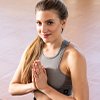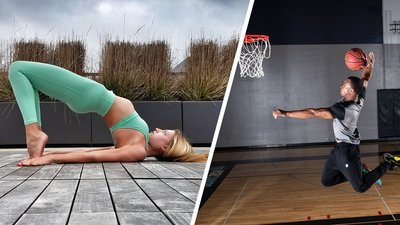Every sport is unique, but athletes of all sports strive for improved performance, bigger goals, and better results. Yoga can help with all three, especially when it's tailored to the sport in question. We've talked about movements that work best for runners, and now it's time to talk about yoga and basketball.
The off-season may be in full swing, but that's the key time to make improvements. Recovery is as important as ever, if not more so. No one wants to develop aches and pains before the season even starts!
Basketball is extremely fast-paced, with lots of jumps, twists, turns, coordination, and sprints that take a huge toll on the joints and tendons. Keeping them flexible and strong prevents injuries and aids recovery. Here are the five favorite moves I include in every yoga flow to keep my basketballers in top condition:
Anjaneyasana: Crescent Lunge
The crescent lunge stretches the hamstring, quad, and hip flexor at the same time. Alignment is key, so make sure your knee doesn't go past your ankle, keep your extended leg straight, and engage your quadriceps throughout the stretch to protect that knee. Lift your arms up; use inhales to extend your whole spine and exhales to go deeper into the pose. Keep your shoulders away from your ears and relax your upper spine while at the same time making sure your core stays engaged. Take five full breath cycles and switch legs.
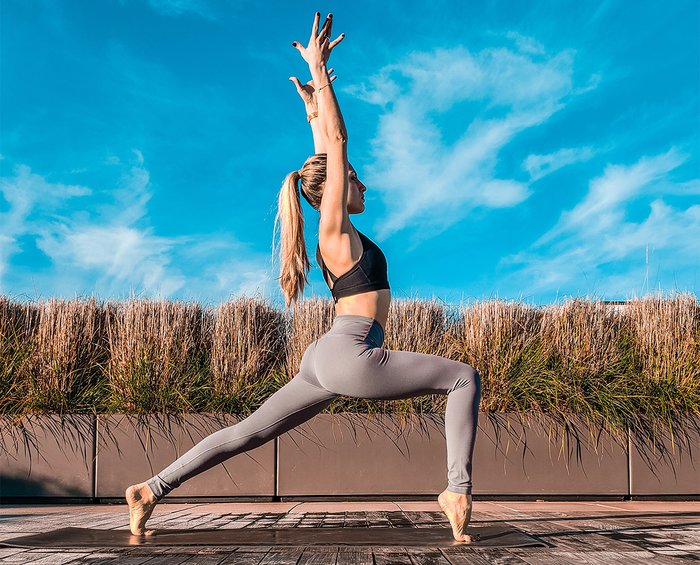
Vrksasana: Tree Pose
Balance is extremely important in basketball, as you're often stopping and starting, changing direction, staying on the balls of your feet on defense, or jumping off one leg to take a layup or dunk. Mimicking those moves in training and teaching your body to get stronger and engage the right muscles minimizes injuries and allows you to execute the movements more efficiently.
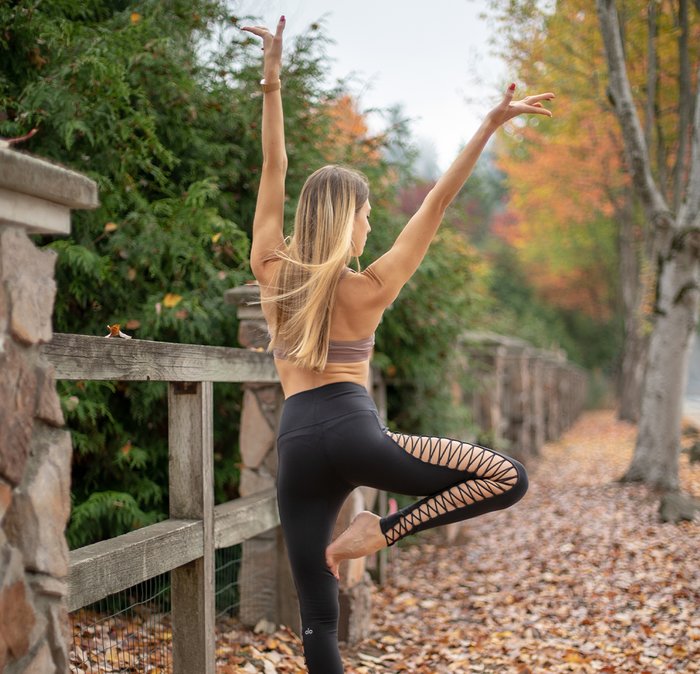
Tree pose is one of those standing balances that test you no matter how long you've been practicing yoga. Engage the muscles on your standing leg and lift the other one up, placing your foot on the standing leg above or below the knee, making sure to avoid pushing against the knee. Push the sole of your foot into your leg in order to create stability, not letting it slip away. Engage your core muscles and pull your ribcage down so that you're not going into a backbend. Remember to breath. You can intensify this pose by closing your eyes for a breath or two. Stay for 5-8 breaths and switch legs.
Virabhadrasana II: Warrior II
There's no doubt that a strong Warrior II is a foundation of every yoga practice. Not only does it open the hips and protect the lower back, but it also tones the legs and builds stability in the ankles. From Warrior I, open up to Warrior II, making sure you go as deep as your body allows. The challenge is in the depth of the pose—the deeper you go, the harder it gets!
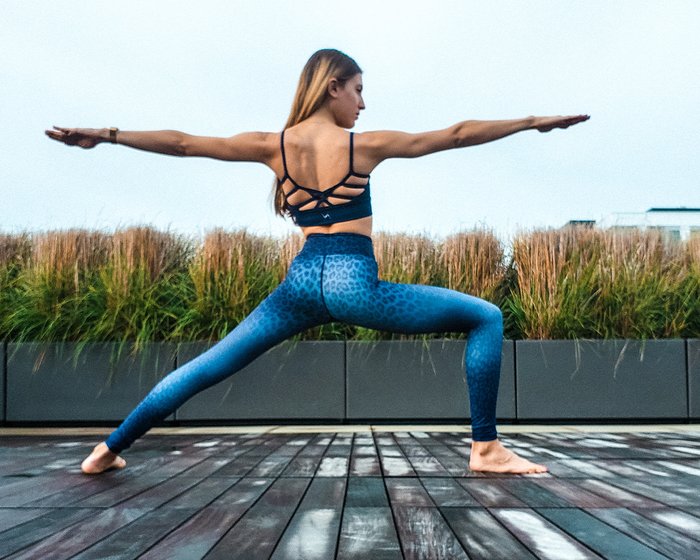
Keep your bended knee directly over your ankle and pay attention to your back foot—the outer part should be firmly pressed into the floor. Building the pose from the ground up, open your hips as much as is comfortable, as long as your knee is in line with your hip. If the knee starts going inward, close up your hips a bit. Remove the curve from your lower back by pulling your belly button up and closing your ribcage. Keep your shoulders away from your ears and open your chest without leaning into a backbend. Gaze over your front arm and activate your hands, sending energy throughout your body. Taking deep breaths will help you settle deeper into the pose. After five cycles, repeat on the other side.
Kumbhakasana: Plank
Nothing works your shoulders and core like a good old plank. Trunk stability and a strong core lend themselves to coordination, rotation, balance, and maximizing your overall strength—all necessary in the sport of basketball.
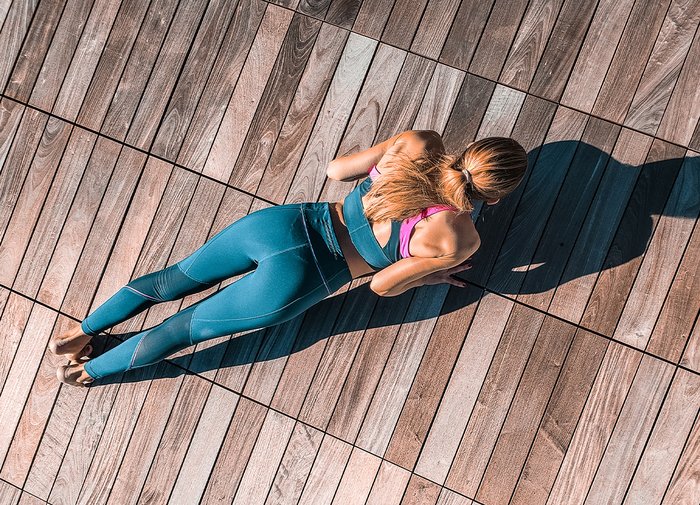
Place your palms right under your shoulders, engage your quads and hamstrings, tighten your core, and breathe. Make sure your hips are not too high or too low and avoid any curving in your lower back. Press into the floor beneath you and feel your shoulder blades separate from one another, creating space in your upper back. Stay there for a couple of breaths and then slowly shift your body forward and back, challenging your core even more.
Setu Bandhasana: Bridge
Bridge is a powerful pose that activates the hips and glutes while protecting the lower back and relieving it of any muscle pain. These muscle groups can take a beating when you're constantly pounding the hardwood, sprinting, and performing drills that emphasize explosiveness. The bridge is your ultimate relief.
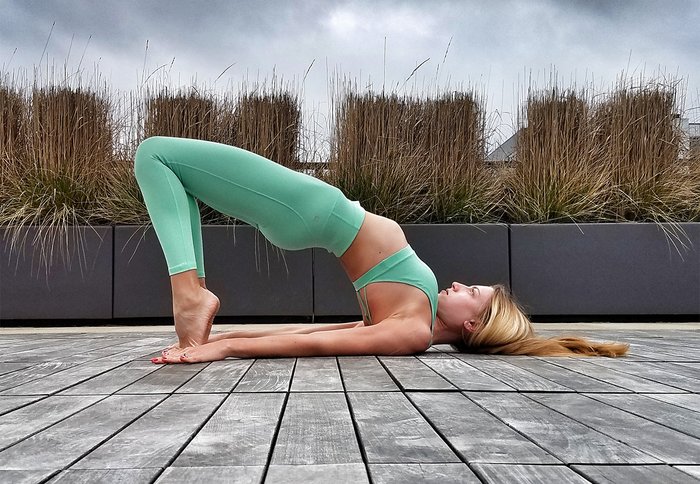
Lie on your back, bend your knees, and place your feet flat on the floor, hip-width apart. Position your arms beside your body, palms facing down and pressed into the floor. On an inhale, slowly lift your lower back, middle back, and, finally, upper back off the floor. You can leave your arms where they are or slowly roll your shoulders under your body. Then, interlace your fingers and push into the floor, creating a bigger opening in your chest.
Use inhales to elongate the spine and send your tailbone as far away from you as possible, and exhales to lift your hips even higher. Avoid bringing your chin toward your chest; instead, think chest toward the chin as you drive your hips higher.
If you like this article, you may love Mind Body Fit, an innovative, holistic approach to fitness that brings you the best of three worlds: workouts, yoga, and meditation.
